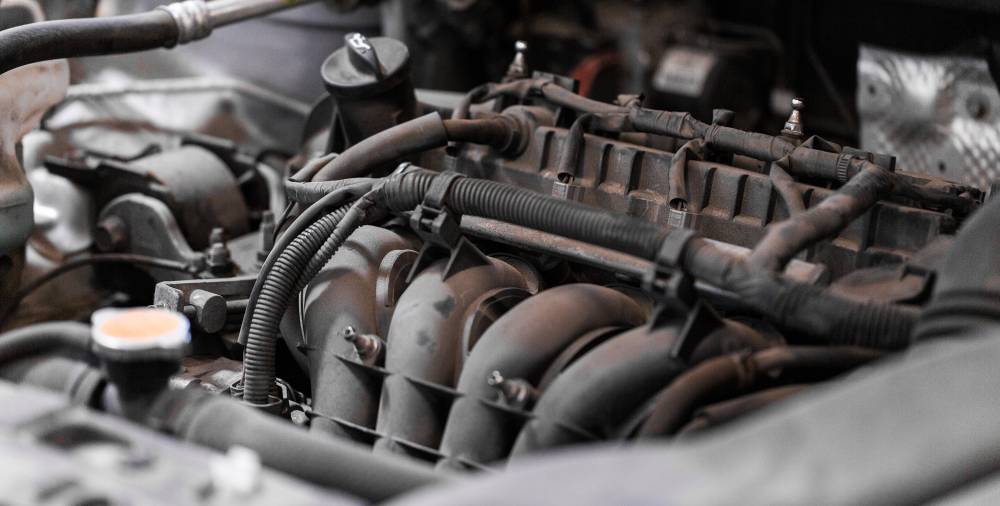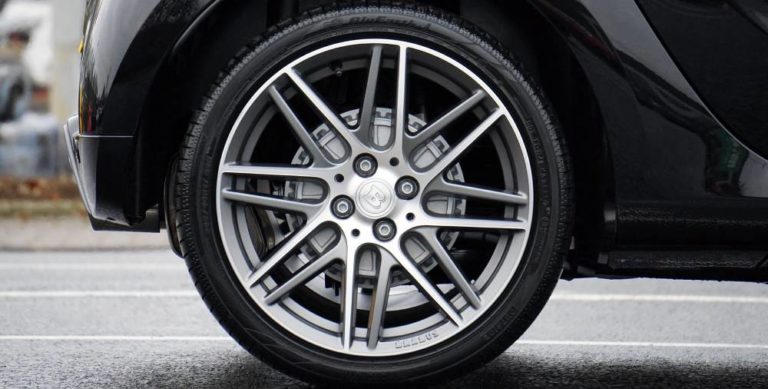What Causes Backfire Through Intake?
This post may contain affiliate links. That means if you click and buy, we may receive a small commission (at zero cost to you). Please see our full disclosure policy for details.
Every part of your engine, especially the intake system, plays a crucial role in how your car functions. So, when you experience an intake backfire—a common form of intake manifold backfire—it’s an issue you must address immediately to avoid serious engine damage. In many cases, a backfire is the only problem you notice before more severe symptoms develop, such as rough idle, loss of power, or engine hesitation. Understanding what causes backfire through intake is essential, yet many car owners aren’t familiar enough with the engine system to diagnose and fix the problem themselves.
Having far too much air and not enough fuel will cause a backfire in the intake manifold. Common causes you may notice are Incorrect Timing, Faulty Plug Wires, Leaking Vacuum Hose, and Malfunctioning Fuel System, possibly due to a combination of these factors. Technicians are usually called upon for such an issue because they understand the intake system well enough to confirm the cause of backfiring and address the issue. Well, if you’d like to know more about backfiring and your intake system, this article is for you.
Backfiring through the intake manifold is a symptom that something is wrong with the air-fuel mixture or ignition timing in your engine. This backfire occurs when unburned fuel ignites prematurely inside the intake manifold, causing a loud popping or banging noise and sometimes even a visible flame or smoke coming from the intake or air filter area. In severe cases, a backfire can create a hole in the intake manifold, indicating significant damage. It can be alarming and may cause damage if left unresolved.
One common cause of intake manifold backfire is a lean air-fuel mixture, which means there is too much air and not enough fuel. This can happen due to a leaking vacuum hose, a malfunctioning fuel pressure regulator, or clogged fuel injectors that restrict fuel flow. Fuel injectors should be tested for leaks to ensure proper fuel delivery, and pressure bleed from the fuel rail can cause lean misfires, especially during startup. On the other hand, a rich mixture with excess unburned fuel can also cause backfires, especially if the ignition timing is off or the spark plugs are faulty.
Ignition timing plays a crucial role in preventing backfires. If the spark plugs are not firing at the correct time, or if they fire too early or too late, the fuel-air mixture may ignite while the intake valves are still open, allowing the flame to travel backward into the intake manifold. Faulty plug wires or spark plugs can cause misfires or delayed ignition, increasing the risk of backfire.
Additionally, issues with the fuel system such as a failing fuel pump, clogged fuel filter, or a malfunctioning fuel pressure regulator can cause inconsistent fuel pressure, leading to improper fuel delivery and backfires. Checking fuel pressure is essential to diagnose fuel system issues, and you may need to pull connectors or components to isolate the problem. Modern vehicles rely on sensors like the mass air flow (MAF) sensor, the engine control unit (ECU), and the timing chain to maintain the correct fuel mixture. If these sensors are dirty, damaged, or malfunctioning, they can cause the engine to run lean or rich, resulting in backfires.
Diagnosing intake manifold backfire requires a thorough inspection of various components including the ignition system, fuel system, vacuum lines, and sensors. Using tools like a timing light and performing a compression test can help identify issues related to ignition timing or engine wear. Timing chain tension must be checked to ensure proper valve operation and prevent backfiring. Checking the valve cover and intake manifold for cracks or leaks is also important, as damaged parts can contribute to backfire problems. Sometimes, you may need to repeat diagnostic steps several times to pinpoint the issue, especially if the engine cranks but does not start, or if it cranks and backfires or runs rough during startup.
If you experience intake manifold backfire, it is greatly appreciated to seek professional help promptly. Ignoring the problem may lead to serious damage to the engine bay components, including the throttle body and air filter. In cases where a backfire has caused physical damage, such as a hole in the intake manifold, affected components should be replaced to restore proper function. Proper diagnosis and timely repair can restore your engine’s performance and prevent costly repairs down the line.
Understanding the causes and symptoms of intake manifold backfire empowers you to take the right steps in maintaining your vehicle’s health. Whether it’s replacing worn spark plugs, fixing vacuum leaks, or servicing the fuel system, addressing these issues ensures your engine runs smoothly and efficiently without the disruptive and potentially damaging effects of backfires.
Introduction to Intake Issues
Intake issues in cars can be both frustrating and costly if left unchecked, especially when they result in intake backfire. Intake backfire happens when combustion occurs inside the intake manifold, producing a loud noise and sometimes even visible flames. This not only disrupts your driving experience but can also cause serious damage to your engine if not addressed quickly. Common culprits behind intake backfire include incorrect ignition timing, a lean air-fuel mixture, and malfunctioning components such as the intake valve, fuel injectors, or fuel pressure regulator.
Regular maintenance is key to preventing these problems. Replacing the fuel filter and checking the air filter ensures that your engine receives the right amount of clean fuel and air, helping to maintain proper fuel pressure and mixture. By staying on top of these routine checks and addressing any intake issues as soon as they arise, car owners can avoid costly repairs and keep their engines running smoothly. Understanding the causes of intake backfire empowers you to take proactive steps, protecting your car from unnecessary wear and ensuring optimal performance.
What Is the Engine Intake Manifold?
The intake manifold is often installed on top of V6 and V8 engines. Depending on the cylinder count, it can also be on the side of the engine. A major component is the intake valve, which regulates the air–fuel mixture entering each cylinder.
Its main function is to evenly distribute the mixture for optimal combustion and motor efficiency. The intake valve opens at the right time to allow the correct amount of gas and air in, then closes so the spark can ignite it in the right cylinders.
If the intake develops leaks or faulty valves, it can cause intake manifold backfire. Minor connection or seal problems might not cause serious damage right away, but neglecting them can lead to failing components. For example, a malfunctioning intake valve can cause an improper mixture, leading to inefficient combustion, higher emissions, and reduced life of the engine. The cause of these issues is possibly due to a variety of factors, such as worn gaskets, cracked manifolds, or sensor malfunctions.
In some cases, if the intake valve or other components of the intake manifold are damaged or worn out, they may need to be replaced to restore proper engine function. Using new gaskets during intake reassembly can help prevent backfire issues. It’s important to have your intake system inspected regularly, especially if you notice symptoms like backfiring, rough idling, unstable idle, idle problems, or a rebuilt engine performance. Prompt diagnosis and repair can prevent further damage and maintain your engine’s longevity and power.
Backfiring vs. Spitting Differences
Before proceeding to the causes, it’s important to know the difference between “spitting” and “backfiring.”
Spitting occurs when unburned fuel ignites in the carburetor or inlet side, whereas backfiring usually happens through the exhaust. Both involve a disruption in the combustion process, but their point of ignition and sound differ.
Intake System Components
The intake system is a vital part of your car’s engine, responsible for delivering the precise mixture of air and fuel needed for efficient combustion. At the heart of this system is the intake manifold, which channels air and fuel into each cylinder. The throttle body regulates how much air enters the engine, responding to your accelerator input. Fuel injectors play a crucial role by spraying fuel directly into the intake manifold, while the fuel pressure regulator maintains the correct fuel pressure for consistent performance.
Another key player is the intake valve, which opens and closes at the right moment to let the air-fuel mixture into the cylinder. Once inside, the spark plugs ignite the mixture, powering your engine. If any of these components—whether it’s the intake manifold, fuel injectors, fuel pressure regulator, intake valve, or spark plugs—fail or become clogged, it can disrupt the mixture and lead to intake backfire. Regular inspection and maintenance of these parts, including checking for leaks or wear, is essential for preventing backfire and ensuring your engine runs at its best.
Causes of Backfiring Through Intake System
There could be several reasons why the intake system backfires. Whatever the cause, backfiring happens as a small explosion inside the intake manifold. The intake valve is intended to provide the right balance of fuel and air, and when there’s less fuel than air in the combination, it causes a small explosion. This imbalance often leads to the air-fuel mixture igniting prematurely while the intake valve is still open, resulting in a backfire.
This phenomenon often occurs before the engine gets warm, especially during cold starts, when the accelerator pump doesn’t supply enough fuel to the mixture. The lack of sufficient fuel causes a lean mixture, which is prone to backfiring. Backfiring in the intake system is usually caused by problems with the ignition timing, where the spark plugs are not firing at the correct time, causing them to fire too early or too late, igniting the mixture at the wrong moment. Adjusting the cranking timing can help prevent backfires during startup, as issues can occur while the engine cranks, such as backfires or rough running. However, other issues with engine components can also possibly cause a backfire.
For example, faulty spark plug wires or misfiring spark plugs can delay or advance ignition, causing the fuel to ignite while the intake valve remains open. Leaking vacuum hoses introduce excess air into the intake system, creating a lean mixture that can ignite prematurely. Additionally, a malfunctioning fuel pressure regulator or clogged fuel injectors can disrupt the proper fuel delivery, and fuel pressure bleed from the rail when the car is off can cause lean misfires during startup, all contributing to backfires.
Other factors such as a dirty or failing mass air flow (MAF) sensor, contaminated hotwire, or problems with the engine control unit (ECU) can cause incorrect air-fuel mixture calculations, leading to backfiring. During diagnostics, it may be necessary to pull components or connectors, such as sensors or fuses, to isolate faults. It’s important to note that backfiring is a sign that something is wrong in the combustion process, and addressing these underlying issues promptly—sometimes requiring repeated checks multiple times—can prevent damage to the intake manifold and other engine components.
In summary, intake manifold backfire is a complex issue that can stem from various causes including ignition timing errors, improper firing of spark plugs, fuel delivery problems, fuel pressure bleed, vacuum leaks, and sensor malfunctions. Understanding these causes helps in diagnosing and fixing the problem effectively, ensuring your engine runs smoothly and reliably.
There are various causes of backfiring through intake:
Incorrect Timing
Your car engine functions efficiently when the spark plugs produce a spark at the right time to ignite the fuel and air mixture. When there’s an issue with the ignition timing, the spark isn’t ignited at the right time, and the fuel gets ignited while the intake valve is still open. This causes an explosion in the intake manifold as the fuel and air mixture force their exit from the fuel injection intake or the carburetor.
Faulty Plug Wires
Ideally, a good plug should endure for a long time in your car. Given that they are the bones of the normal functioning of the engine, spark plugs must be properly installed. However, as a rule of thumb, you should replace your spark plug when your car has run for about 60,000 miles.
Similar to the ignition timing problem, crossed or wrongly installed spark plug wires can cause incorrect firing of the spark plugs, making them fire at the wrong time. This improper firing causes ignition of the fuel and air mixture while the intake valve is still open, leading to an explosive exit through the carburetor or fuel injection intake. Carb Cleaners can help you with this.
Leaking Vacuum Hose
What happens when you have a vacuum hose leak is that it allows excess air to enter the intake manifold. And too much air being mixed with fuel results in a lean running condition. The volatile mix causes premature ignition and causes a backfire.
Faulty Computer System
Many modern cars rely on computers to assist in different functions. One of those functions is calculating the fuel and air mixture required in the engine. When there’s a malfunction of one of the sensors used by your onboard computer, the system can misread the requirements and possibly add little fuel to the incoming air, causing a backfire.
Contaminated Hotwire
The function of the mass flow sensor is to read the amount of air that gets into the engine’s intake system. There is a chance that this sensor fails to function optimally when there is a contamination or particle buildup in the hot wire section.
Malfunctioning Fuel System
A bad fuel system can cause your engine to backfire or spit through the intake system. In the event there is an issue with the preset ratio (14:1 air-fuel ratio) of fuel to air in the internal combustion engine, optimum fuel burning is lacking as a result of the inability of the fuel pump to supply the needed volume of fuel to the fuel injectors. Fuel systems often have one-way check valves to retain fuel pressure when the engine is off. If there is pressure bleed from the fuel rail after shutdown, it can cause lean misfires or hard starting due to loss of fuel pressure.
You will also have to check the fuel filter to know if it’s in order. Once the filter is clogged, the amount of fuel passing through it will reduce, leading to an under-supply of fuel. Faulty components such as the fuel filter, fuel pump, or fuel pressure regulator may need to be replaced to restore proper fuel system function.
Preventing Damage
Preventing damage from intake backfire starts with regular maintenance and attention to detail. Ensuring your ignition timing is set correctly is one of the most effective ways to avoid intake backfire, as mistimed sparks can ignite the mixture at the wrong moment. Keeping the air-fuel mixture balanced is equally important—a lean mixture, with too much air and not enough fuel, is a common cause of backfire.
Routine replacement of the fuel filter and inspection of the air filter help maintain clean, unrestricted flow to the engine, reducing the risk of intake backfire. If you do experience backfire, it’s crucial to address the issue immediately to prevent serious damage to components like the intake manifold or spark plugs. This may involve replacing damaged parts, adjusting ignition timing with a timing light, or correcting the fuel mixture. Performing compression tests and leak-down tests can also help catch potential problems before they escalate. Always wait for the engine to cool before inspecting the intake system to avoid injury. By staying proactive and using the right diagnostic tools, you can keep your engine healthy, avoid costly repairs, and enjoy reliable performance from your car.
Final Thoughts
Backfiring Backfire can be both a nuisance and a warning sign. While many causes are simple to fix, ignoring them can lead to serious damage. If you’re not confident working on spark plugs, injectors, or timing chains, don’t guess—seek professional help.
That way, you can prevent the crap from hitting your engine bay and avoid costly repairs. Whether it’s replacing plugs, cleaning the air filter, or adjusting the timing, timely maintenance will keep your motor running smoothly.
And yes—if you’re reading this on the Tapatalk app Safari or elsewhere—remember that keeping your engine in top shape is greatly appreciated by your car, your wallet, and your life on the road.
- Rubbing Compound: What Is It & How To Use
- Plastic Fuel Tank Repair: How To Repair
- Gear Shift Stuck: A Complete Guide
- Symptoms of a Failing or Bad Fuel Filter
- Engine Misfire Symptoms: What Is It & How To Fix
- Driving With Tire Bulge: Causes & Is It Safe?
- Should You Wax Car Windows
- AC High-Pressure Switch Symptoms







